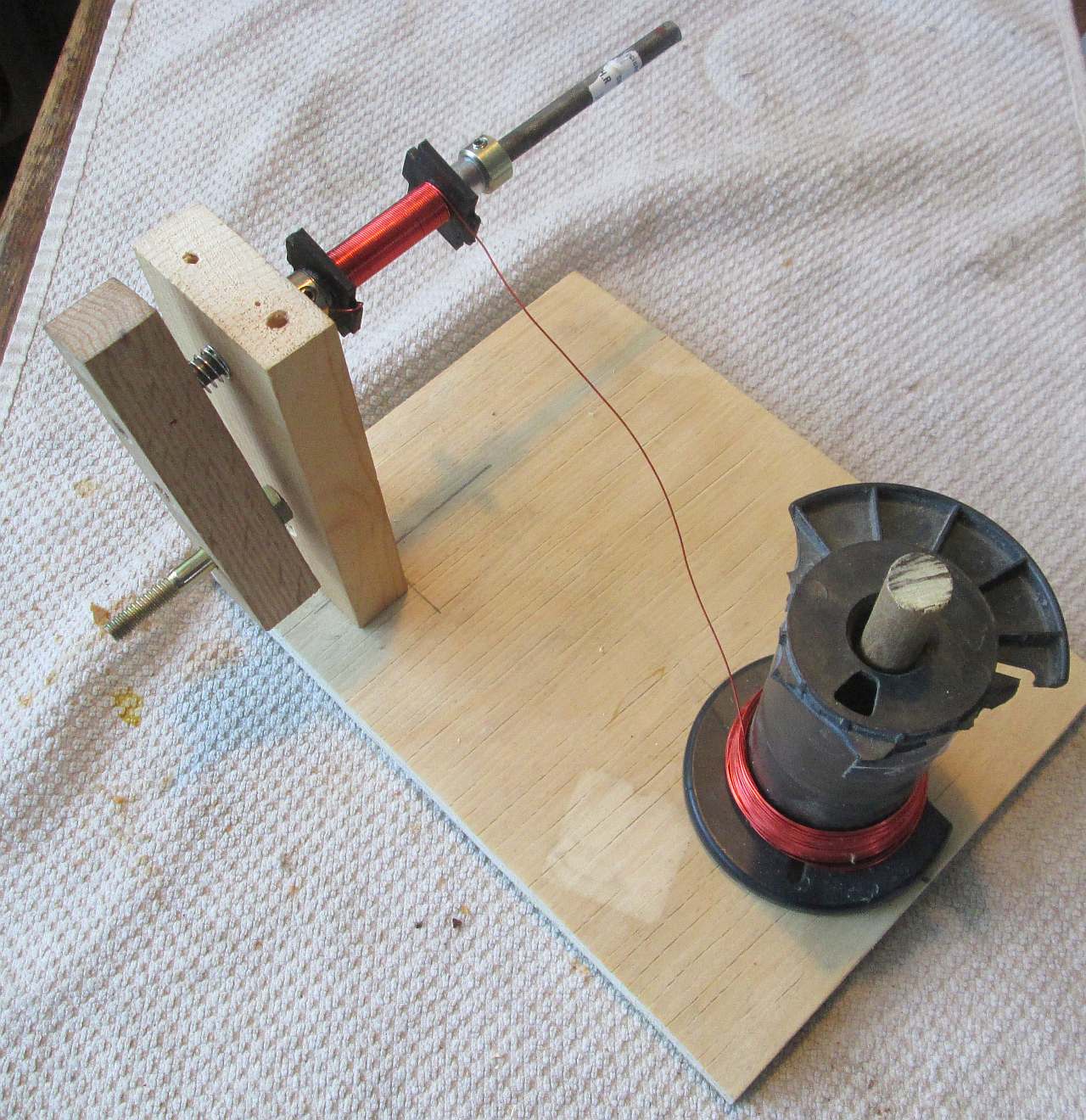Wave Hours of Finger Cramp Goodbye With a Simple 5 Minute Project
Working on Scribble forced me to confront some uncomfortable truths about solenoids. Namely, it’s really hard to find a good solenoid at a good price. At the end of that article, I considered the idea of making my own.
Solenoids are not complicated. They’re literally wire wound on a tube. Yet, it’s the process of winding that ends up being the most complicated part. You have to keep the windings tight or they spring all over the place.
In my reckless youth, I wound many coils by hand. I was rewarded with the worst hand cramp I have ever suffered. Not to mention I always released the wire at the exact wrong time; ruining all my hard work. I don’t know how I put up with all that.
The solution is to build some kind of jig or machine to do all the hard work. Many examples abound- but I find them to be overly complex in general. You can put a simple winding jig together out of scraps in a few minutes.
Yet again this project is one of those “why didn’t I do this sooner” ones. I’m very glad I got around to this one!
DIY Coil Winding Jig
Only three things are required to build a coil winding jig:
- A spool spindle for the bulk wire
- A mandrel to wind the coil on the former
- A base to hold everything together
None of these things are particularly hard to get your hands on.

The base is just a scrap of 1/2″ plywood, about 9×6.5″. A slightly longer base would be ideal, but it does the job.

I chose a 1/2″ spool spindle for the simple reason I only have 1/2″ dowels to hand. It’s about 5″ tall.

This support is a 2x5x3/4″ scrap. I chose 1/4″ for the winding mandrel. If I need to wind on a 1/2″ mandrel, I can flip this over and use the other hole. Not a design choice, just a consequence of recycling parts.

Winding the mandrel requires a crank. I had a piece of hardwood with 1/4″ holes and setscrew holes that works perfectly. The handle is a bolt because I didn’t feel like cutting another chunk of 1/4″ rod.

Having put this entire jig together in record time, I immediately set out to use it.
I have a solenoid former ready to go, and a mostly empty spool of magnet wired that needs to be used up. Let’s see how it goes:

By far the easiest coil I have ever wound.

Behold the fruits of my labor: a solenoid coil that is too weak to do what I wanted it to do!
It’s a fine coil nonetheless.
While this particular specimen was unsuitable for further use, I did in fact prove this jig works better than hand winding. I only spent a few minutes on winding. My hands still cramped up a bit, though far less than trying to wind by hand. Also, I could stop partway through if I needed a break. Can’t do that when hand winding. I know from experience.
I only have two serious issues with this jig:
First, the former tends to slip on the mandrel. Pressing things really tight helped, but some kind of driving “dog” would be better.
Second, it’s tricky to keep the wire taught enough to keep the windings tight. Putting some weight on the spool is the solution I was planning around- but there were no suitable weights to be found. I ended up hand guiding the wire a bit.
Despite these flaws, it’s a clear step up from using only your hands. I’ll probably keep tweaking it as I need to.
Finishing Up
I have some cool project ideas that require winding lots of coils. The practicality of these projects hinges on whether I can wind coils quickly and efficiently. Now that I can rapidly make coils, those projects are definitely going to happen.
So-called “five minute” projects rarely take only five minutes in my experience. This winding jig really does take about five minutes to build. I spent way more time running around finding stuff than actually building it.
Using a solid mandrel is easy, but it’s hard to adapt to other sizes, shapes, or any other “unusual” formers. I plan to put a chuck on this thing (or it’s successor) eventually. Threading the end of the mandrel would also help.
Motorizing the mandrel is desirable feature. I find the current state of the jig too finicky to jump straight into motorization. A manual crank is easier to… handle.
Perhaps the biggest missing feature is a turn counter. Most inductor designs call for “X number of turns”. Manual counting is never going to work. I have a few turn counter ideas, though they will need some prototyping before I’m ready to try implementing them.
2023 continues to be the Year of Doing Stuff. So many little bits and pieces I’ve left lying around for years are getting swept up all at once. Feels great.
I’ve got plenty more to do though. Scribble needs start moving, there’s the 6502 stuff, and tons of projects yet unannounced. It’s going to be a happening year, that’s for sure!

Have a question? Comment? Insight? Post below!